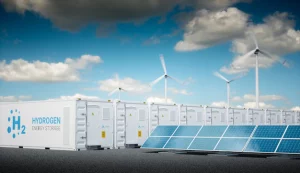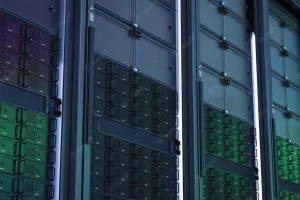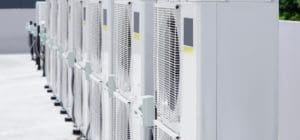Sustainable data centre design is crucial for organisations aiming to reduce their environmental footprint while maximising efficiency. At EziBlank, we understand that a well-optimised data centre not only enhances performance but also aligns with eco-friendly practices. Our innovative air-flow management systems and energy-monitoring solutions are specifically engineered to help you achieve your sustainability goals while significantly lowering power consumption. Discover how our EziBlank blanking panels can transform your infrastructure investment and pave the way for a greener, more efficient future.
Green Data Center Concepts
Green data centre concepts focus on minimising the environmental impact of these energy-intensive facilities while maintaining high levels of performance and reliability. Key strategies include using renewable energy sources, such as solar or wind power, to reduce reliance on fossil fuels and incorporating energy-efficient technologies like advanced cooling systems that utilise free cooling or liquid cooling methods. Additionally, green data centres often employ design features that enhance energy efficiency, such as cold and hot aisle containment to optimise airflow and reduce cooling requirements. The adoption of energy-efficient hardware and the implementation of effective power management practices, including real-time monitoring and optimisation of power usage effectiveness (PUE), are also central to green data centre operations. By integrating these concepts, businesses can reduce their carbon footprint, lower operating costs, and contribute to a more sustainable future.
Read More
The Advantages of a Green Data Center
A green data centre offers numerous advantages, both for the environment and for the businesses that operate them. By prioritising energy efficiency and sustainability, green data centres significantly reduce their carbon footprint, contributing to environmental conservation and aligning with global efforts to combat climate change. These facilities often utilise renewable energy sources, such as solar or wind power, which not only cuts down on greenhouse gas emissions but also reduces reliance on traditional, non-renewable energy sources. Additionally, green data centres implement advanced cooling technologies and airflow management strategies, such as hot and cold aisle containment, to optimise energy use and lower operational costs. The financial benefits are substantial, as reduced energy consumption translates directly into cost savings over time. Furthermore, operating a green data centre can enhance a company’s reputation, demonstrating a commitment to sustainability that resonates with environmentally conscious customers and partners. Overall, the shift towards greener data centres is not only a responsible choice for the planet but also a strategic business decision.
Read More
Defining and Being a Green Data Center
A green data centre is one that prioritises sustainability and energy efficiency in its design, operations, and maintenance, aiming to minimise its environmental impact while maintaining high performance. This is achieved through several key strategies, including the use of renewable energy sources such as solar or wind power to reduce reliance on fossil fuels. Energy-efficient hardware, advanced cooling techniques like free cooling or liquid cooling, and effective airflow management using hot and cold aisle containment are also integral to green data centres. These facilities often implement rigorous energy monitoring and management practices to optimise power usage effectiveness (PUE) and reduce waste. Being a green data centre means not only adopting these technologies and practices but also committing to ongoing improvements and innovations that further reduce environmental impact. This approach benefits both the planet and the bottom line, as reduced energy consumption translates to lower operational costs, and the commitment to sustainability can enhance a company’s reputation and appeal to environmentally conscious customers and partners.
Read MoreBest Practice Guide for an Energy Efficient Data Center
Creating an energy-efficient data centre involves implementing best practices that optimise performance while minimising energy consumption. Key strategies include effective airflow management, such as using blanking panels and hot/cold aisle containment to prevent the mixing of hot and cold air, thus reducing the load on cooling systems. Upgrading to energy-efficient hardware and utilising advanced cooling technologies like liquid or free cooling can significantly lower energy use. Regular monitoring and optimisation of power usage effectiveness (PUE) are also crucial, allowing for real-time adjustments that enhance efficiency. These practices not only reduce operational costs but also contribute to a more sustainable and environmentally friendly data centre.
Read More
